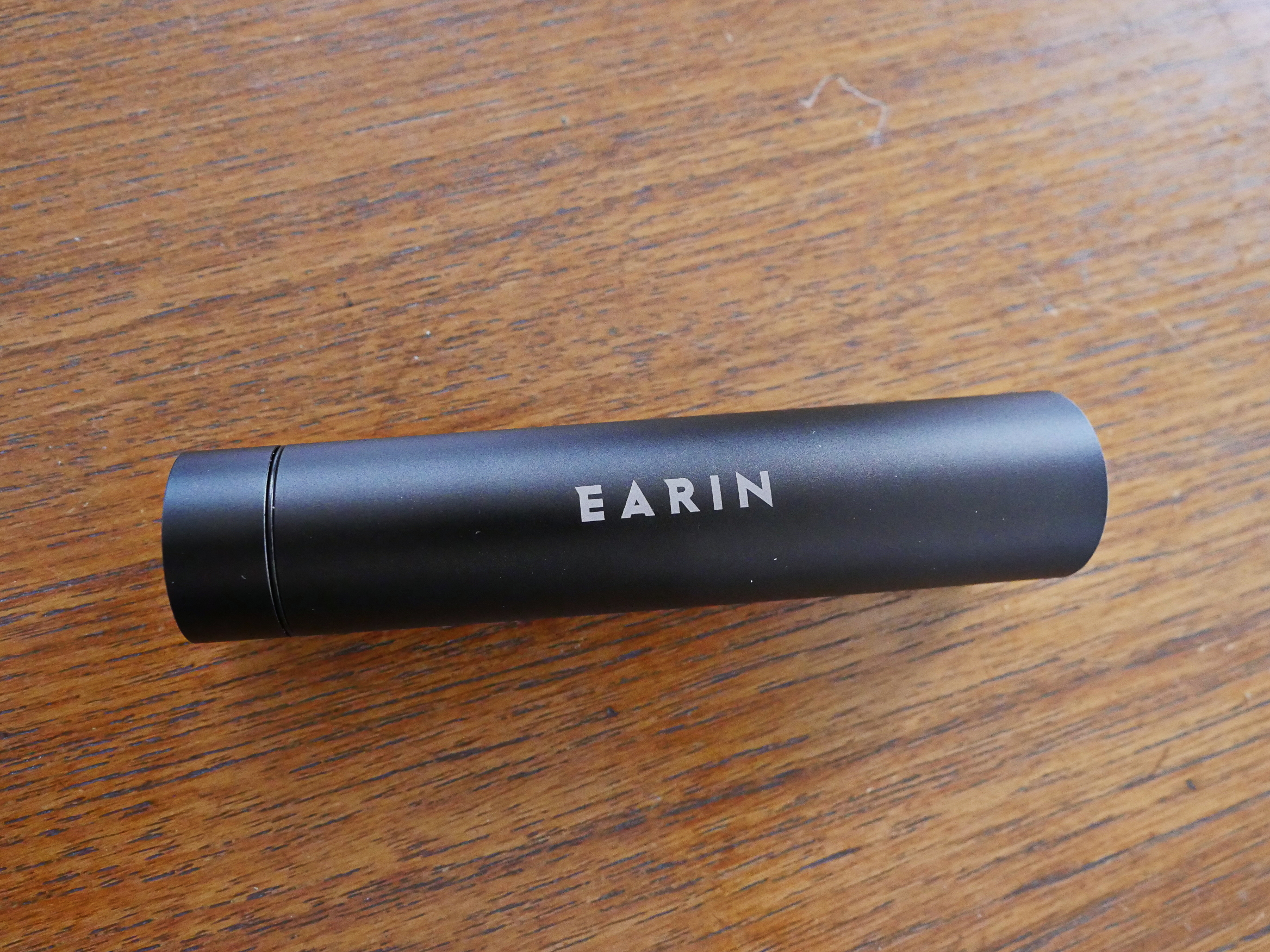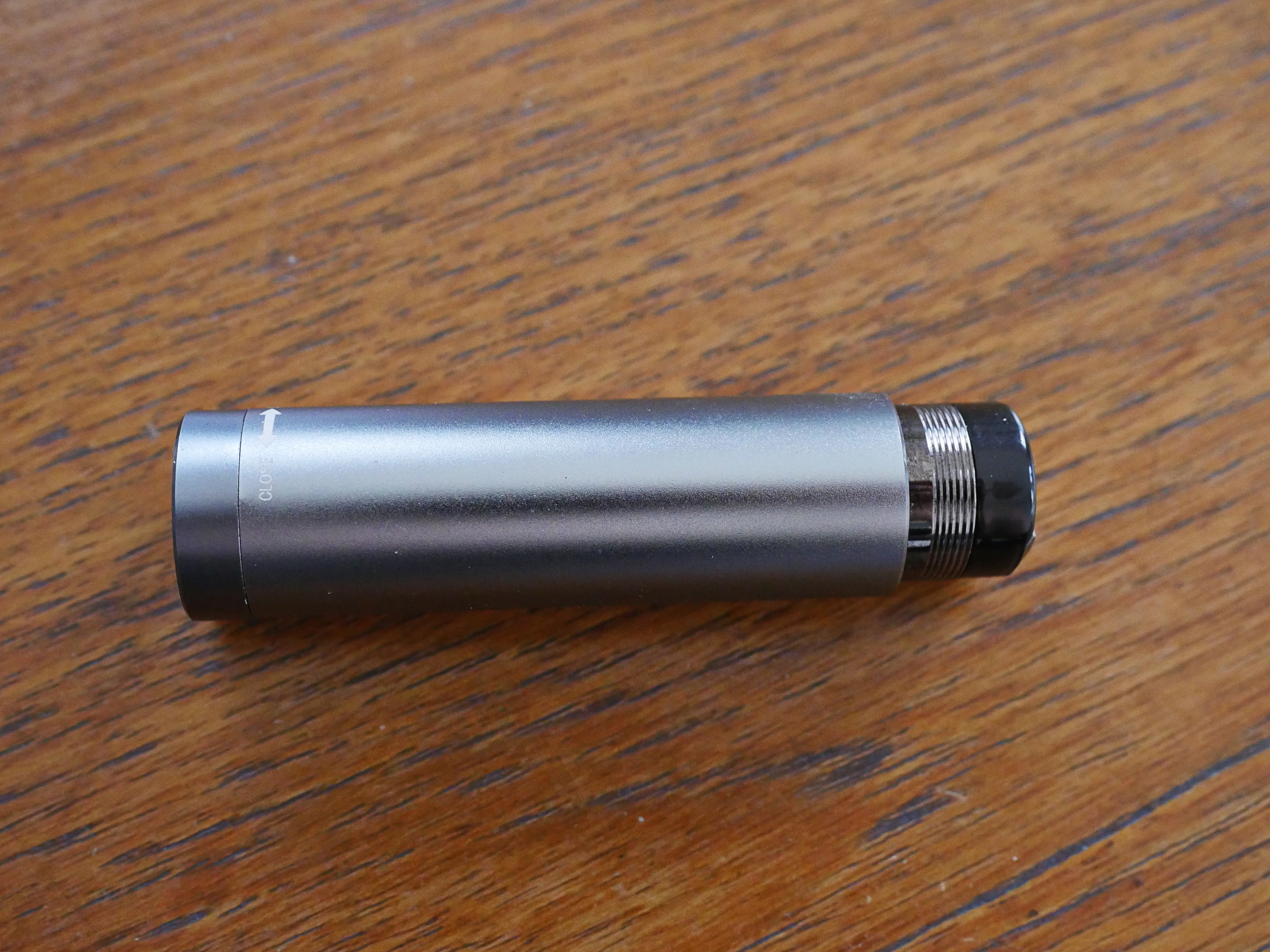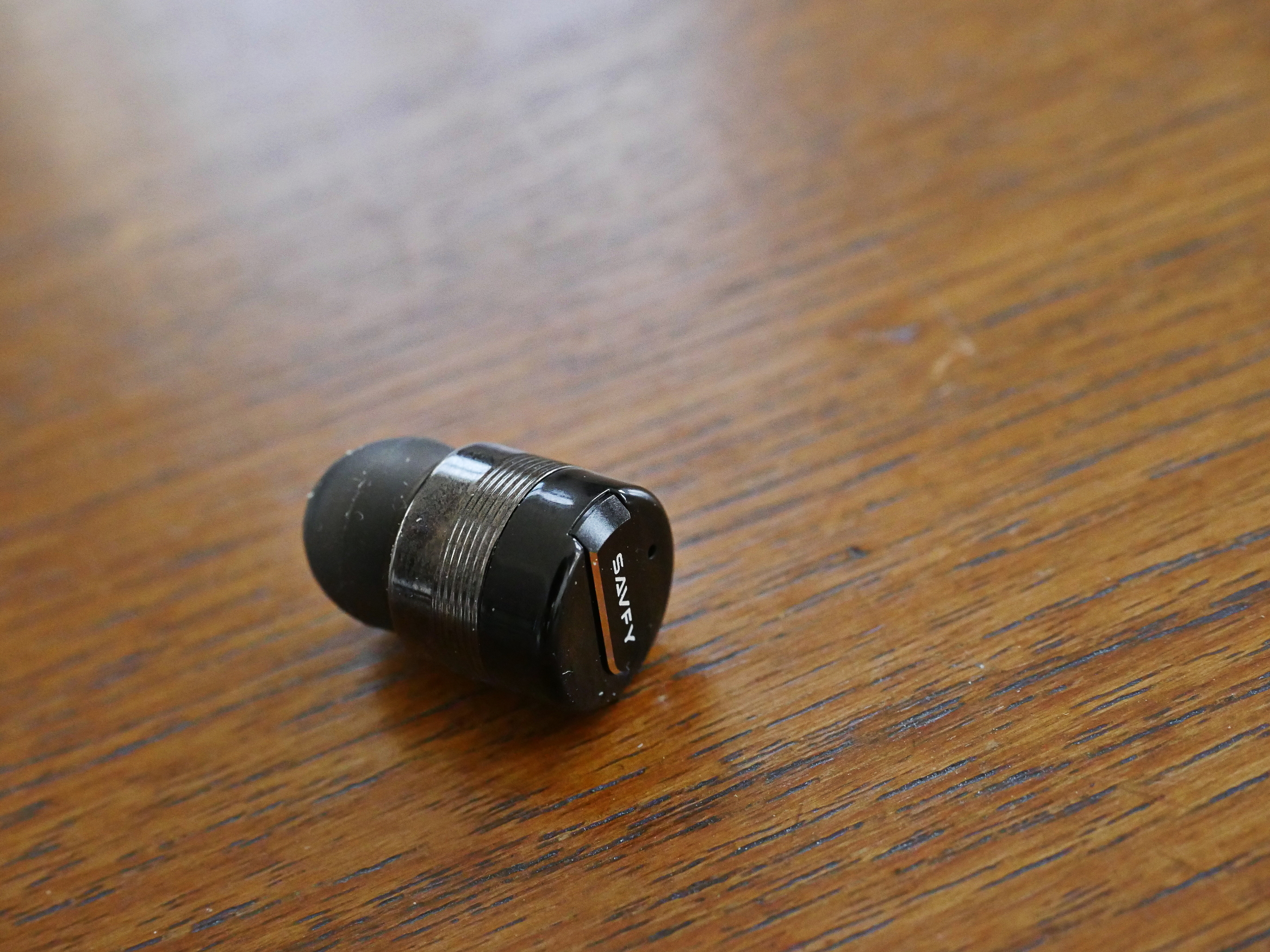I walk a lot, and I used to listen to music while walking, using big, beefy, good wireless headphones or headphones with an mp3 player built in. That’s a solved problem; excellent products exist.
Last year I started listening to radio dramas instead. Mostly mysteries, and quite a lot of stuff from the 50s. It’s fun! But I don’t need a full set of headphones to listen to that stuff; it’s fine listening to in mono in one ear only.
And here my troubles began.
There’s quite a lot of wireless earbuds out there, but they all have the same problem: The range sucks.
The first one of these I tried was the original Earin, and it was pretty much unusable. But now there’s the Earin M-2, which promises to have solved all the problems.
Like the previous version, it comes with a round charging case…
… and both buds fit in there. The charging case is larger than the previous version, but it’s also a lot less fiddly. The buds slide in there like magic (probably magnets), and that’s nice.
And the buds themselves are also larger, and don’t look as cool as the M-1s.
The range is better than the M-1, but it’s not actually good. The frustrating thing when reading reviews about wireless headgear is that apparently nobody who reviews them uses them outdoors. Indoors, blutooth works well, because it can bounce the radio against the walls, but outdoors, there’s nothing, so the radio just dissipates unless it’s very powerful.
If I have my phone in my left front pocket and an earbud in my right ear, they’ll drop connection like crazy when outdoors. I have to put the phone on the same side of the body as the earbud is if it’s to have any chance of working semi-reliably.
So these are pretty much standard in the range dept… but the UX is horrible. Just horrible. They use a touch interface, and give no audible feedback. So the way to use them is to put one in an ear, wait for ten seconds and then hopefully it’ll have contacted the phone, and then tap it to unpause, and then nothing happens, and then tap again, and then again, and then you’ve tapped too many times and it unpaused and paused again.
And when you’re not using it, you can’t just put it in a pocket, because if you touch it, you turn it on and it’ll use all its battery while not doing anything.
So you have to carry the case around with you, which is a bother.
Compare the Earin M-2 disaster to this older, cheaper earbud that goes under many names, like Savfy and Rowkin Mini. They look slightly different depending on who the manufacturer is, but it’s the same product, I think.
See that thing there on the side? It’s a button. B-u-t-t-o-n. Button. You press it to switch the earbud on, an you press it again to pause/unpause the audio, and you long press it to switch it off. When the earbud connects to the phone, you hear a voice saying “connected”. When it switches off, it tells you that, too.
The UX is hard to improve on.
Of course, the range is horrible, just like the Earin M-2. Perhaps even worse, really: I frequently find myself putting my phone in my shirt pocket to have it stay connected if I do something crazy, like look around before crossing a street.
Perhaps somebody one day will make something better, but it hasn’t happened yet. I hope that someday somebody will realise that playing audio using an almost unbuffered wireless stream is absurd: The earbuds should instead pull down blocks of data from the device and then play it. That would also allow it to shut down its antenna, meaning power savings.
Of course, this won’t work for real-time audio (like talking on the phone) but does that even happen any more? 100% of my use case for these devices is listening to prerecorded data, so it’s not like it has to be ultra low latency or anything.
ANYWAY! I’m mostly listening to mystery radio dramas, and the challenge there is that the actors will alternatively shout “THERE”S THAT BAD GUY! STOP HIM! PEW PEW!” and whisper “ssssh here’s the solution to the mystery that I’m telling you while we’re in this hedge”, and I found myself having to turn the volume up and down a lot, which is totally annoying. Surely there’s a solution to this?
And of course, and it’s called “compression” or “normalisation” (even if those aren’t the same things). On Linux, sox is a fine program that can do many audio things, and it has a module called “compand” which is made to compress audio (i.e., make the loud parts less loud and the quiet parts louder). By Googling a lot and experimenting a bit, I found some settings that work well for radio theatre, and I wrote a little bash script that’ll take a tree of mp3s, normalise/compress the audio, and then write out new mp3s, and also copy over id3 tags and artwork and the like.
It’s a trivial script, but Googling all the moving parts took me a while, so it’s here all put together in one place so that you don’t have to do this work yourself if you find yourself in the same position and landed on this page through googling “audio compression no I’m not talking about file size compression but, like, compression of the audio range, dude”.
I’m guessing this will also work on podcasts and the like, although I would imagine that the audio range is much narrower there to begin with. I’ve been using this for a few months and it seems to work well, although sometimes some very quiet sounds do get amplified a bit much.





I found the “Hi5” ones I have from a company christmast gift – unfortunately they exhibit the problem you describe; the sound only works reliably when the phone is on the same side and the phone is upside down on my pocket. I can’t recommend them.